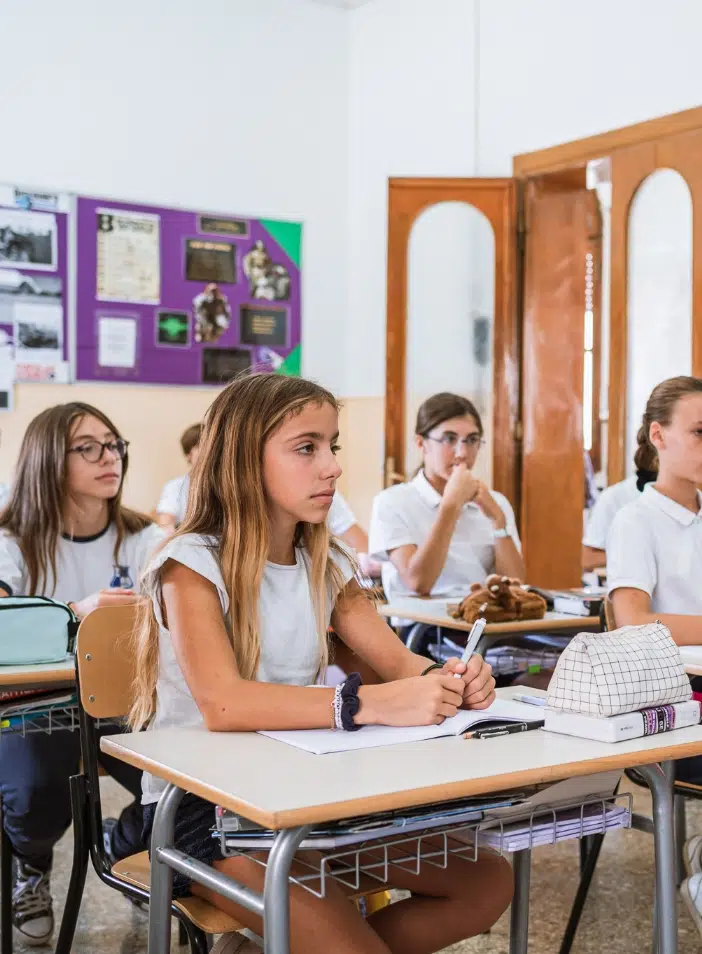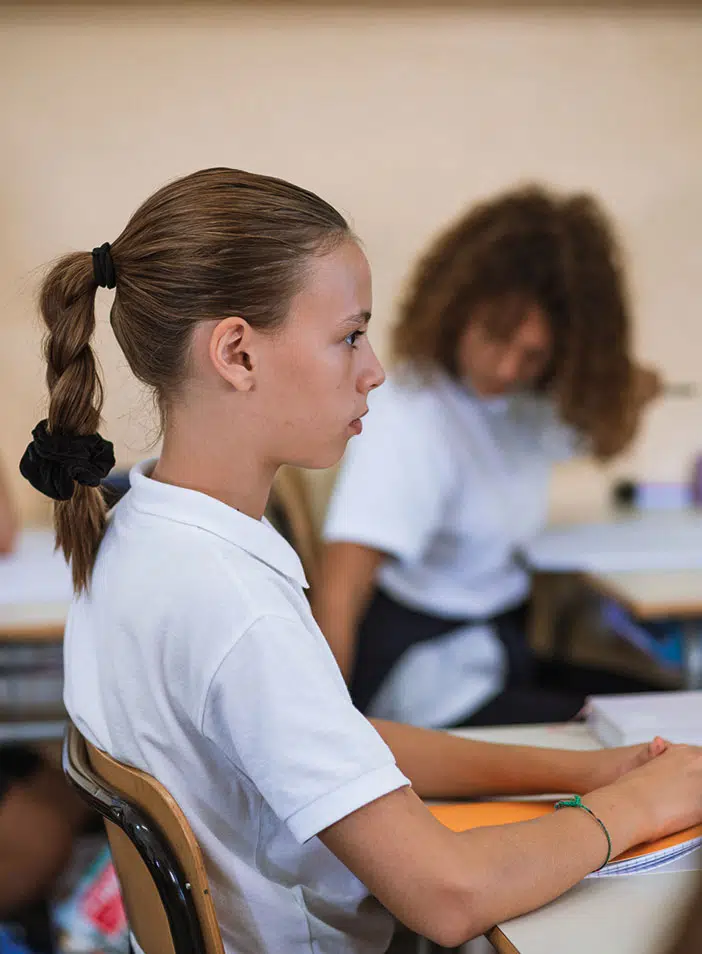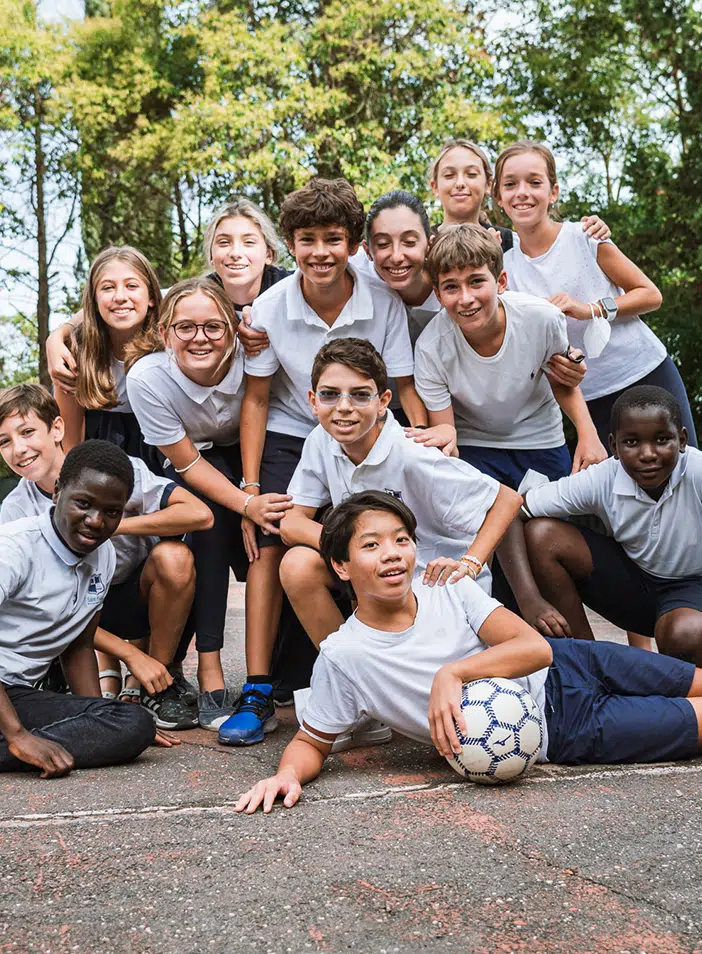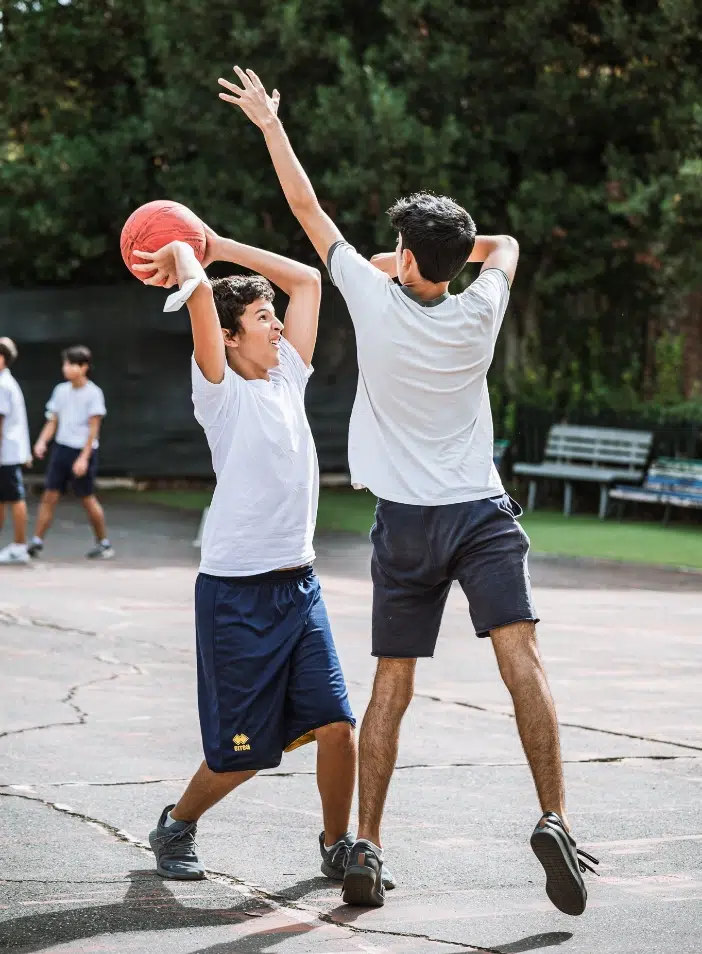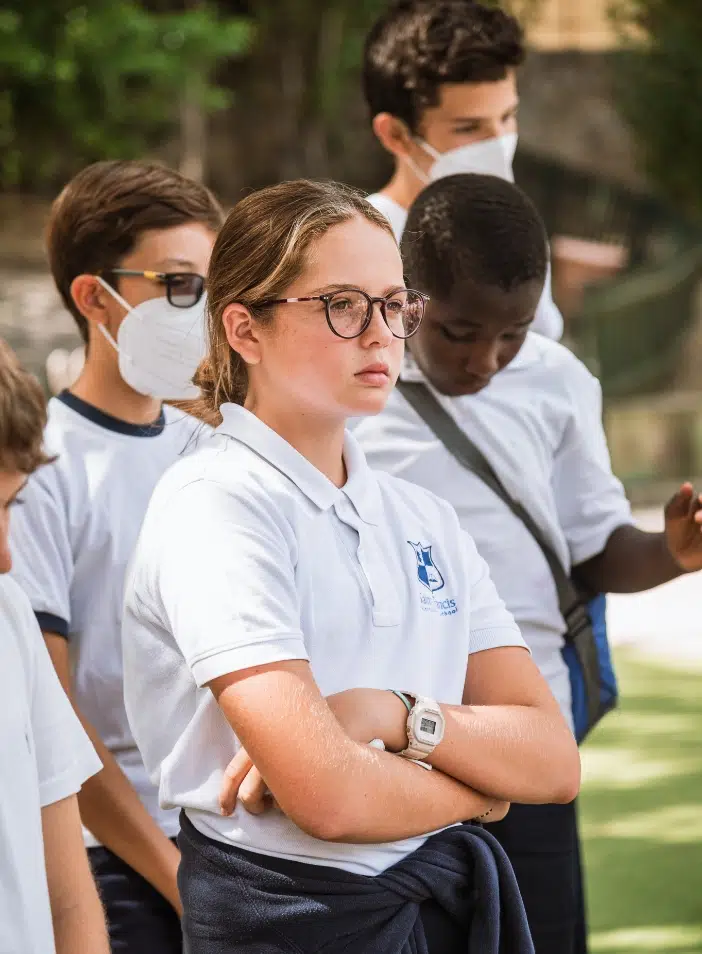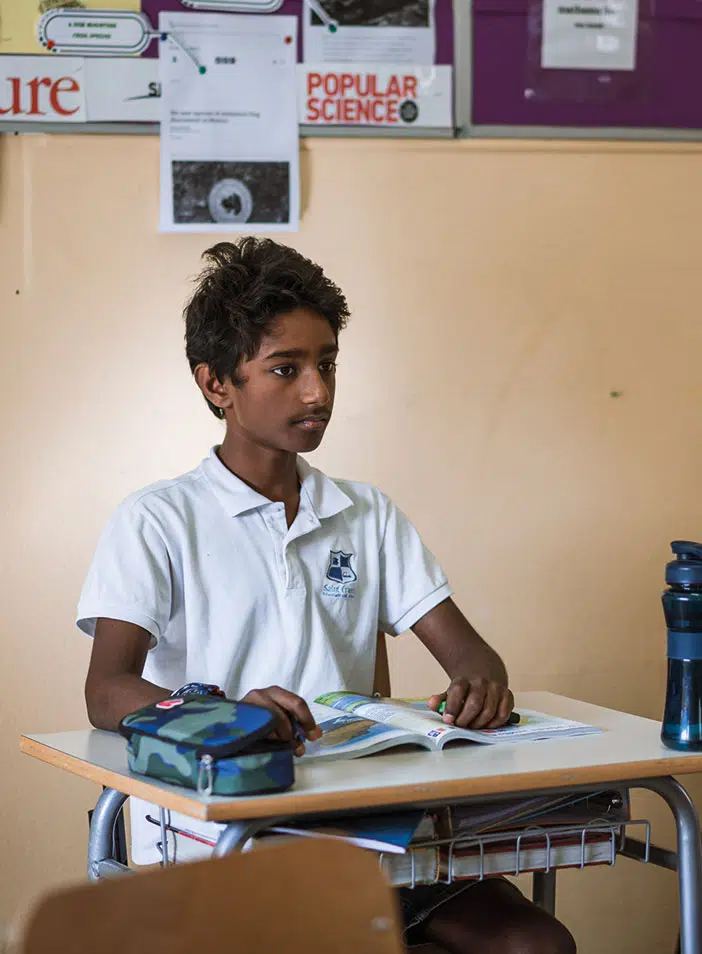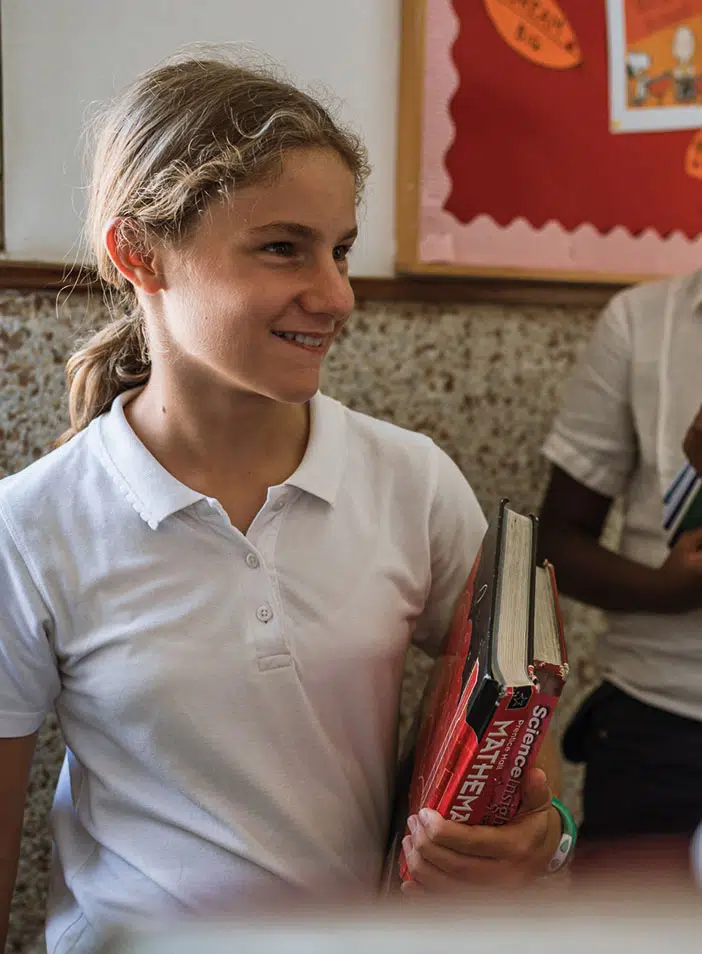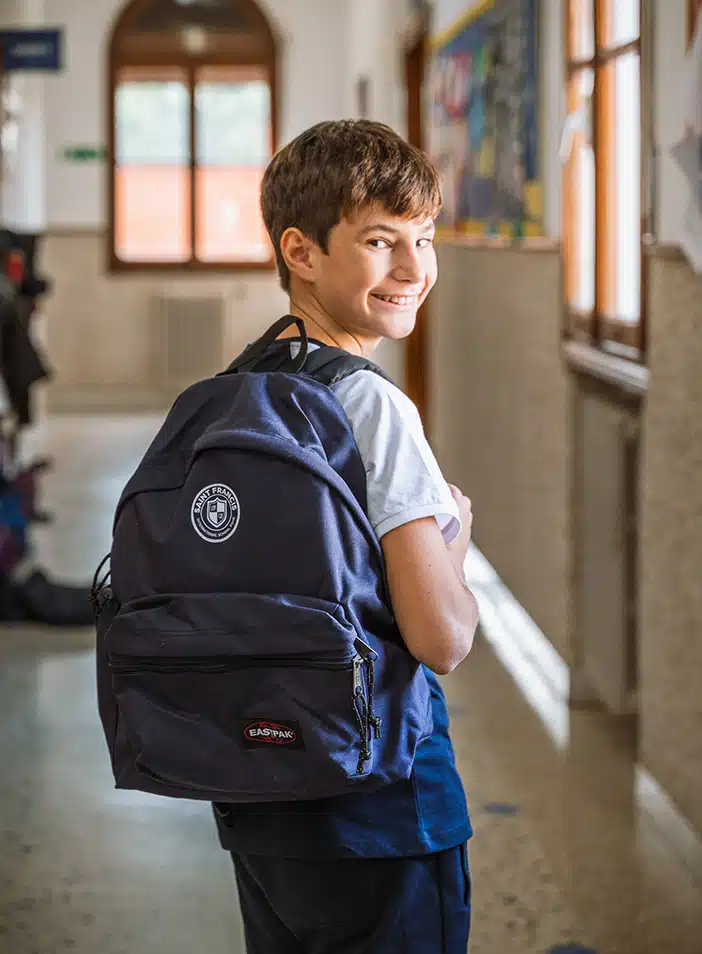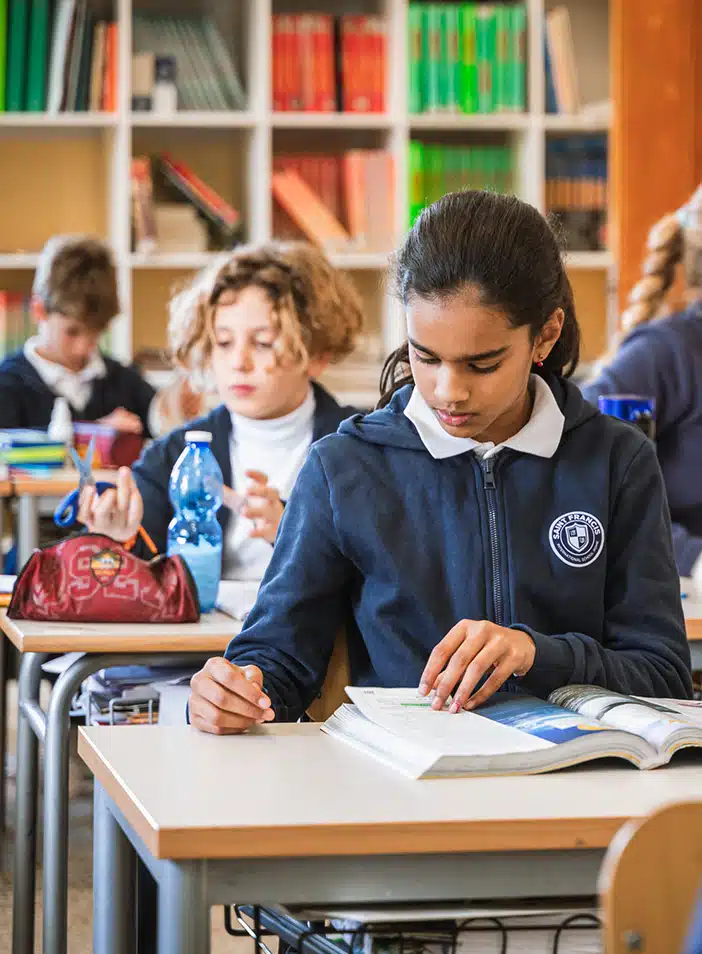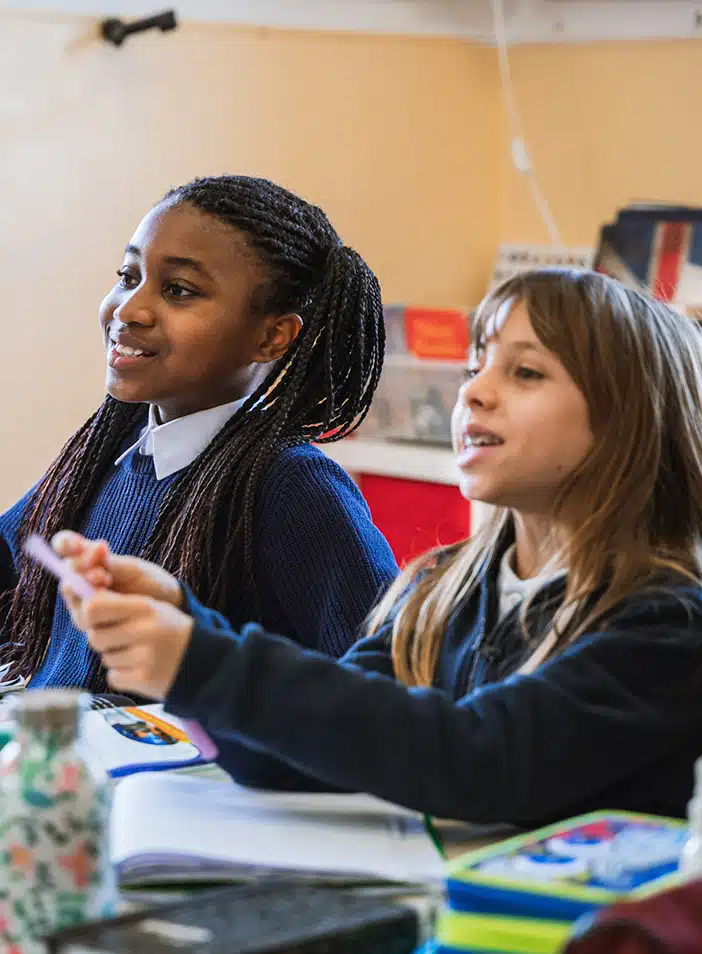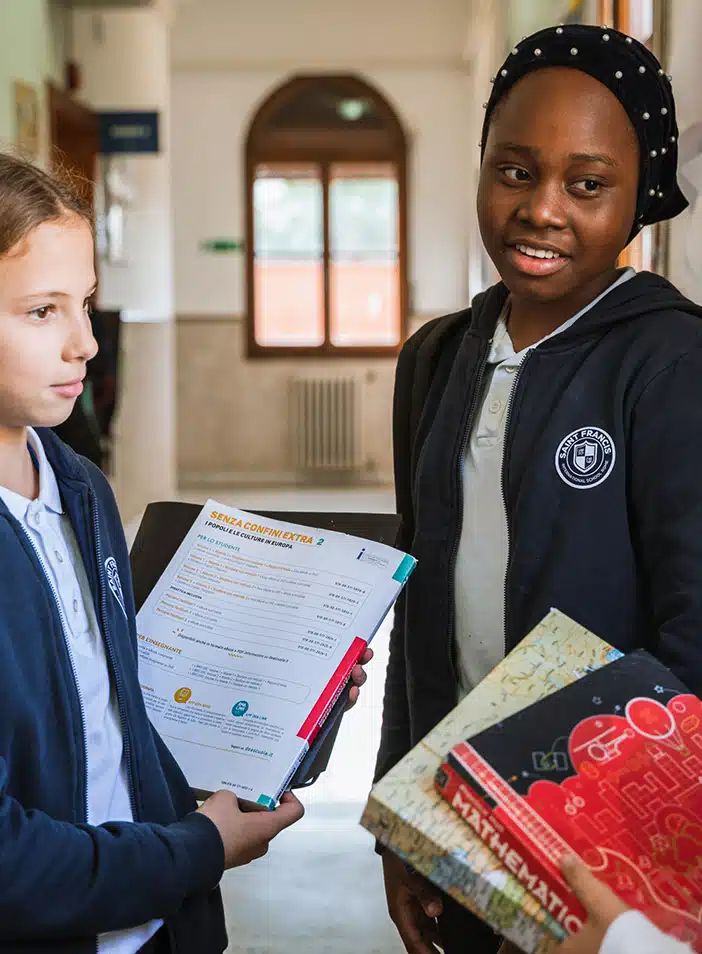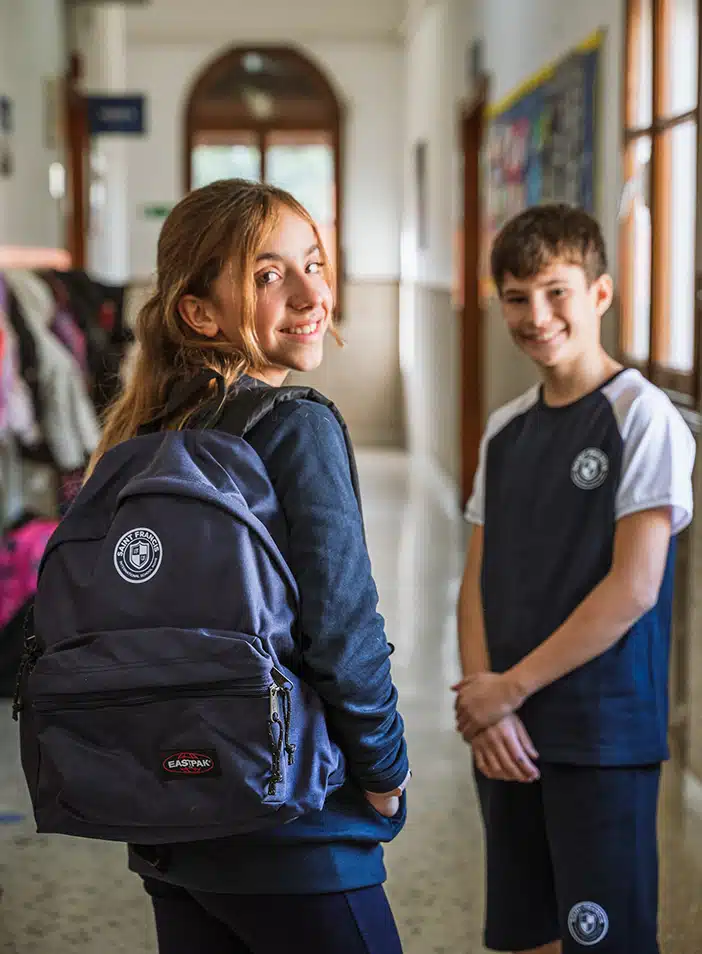The Middle School academic program at St. Francis is a pathway with multiple aims: strengthening English language proficiency to communicate efficiently; developing problem solving skills and critical thinking; exploring a variety of topics in a global context; and building confidence, independence, collaboration and respect in a diverse cultural experience. This important transitional moment in a student’s development is championed by a caring staff team that challenges, supports growth, empowers and helps to prepare each individual with the tools needed to face high school expectations, anywhere in the world that may be.
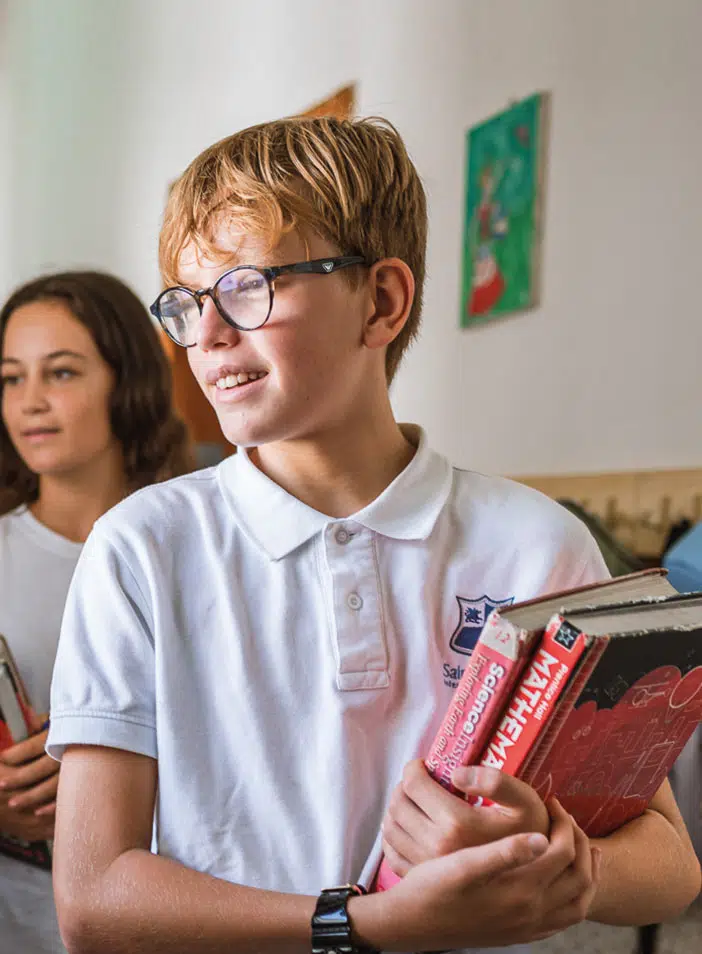
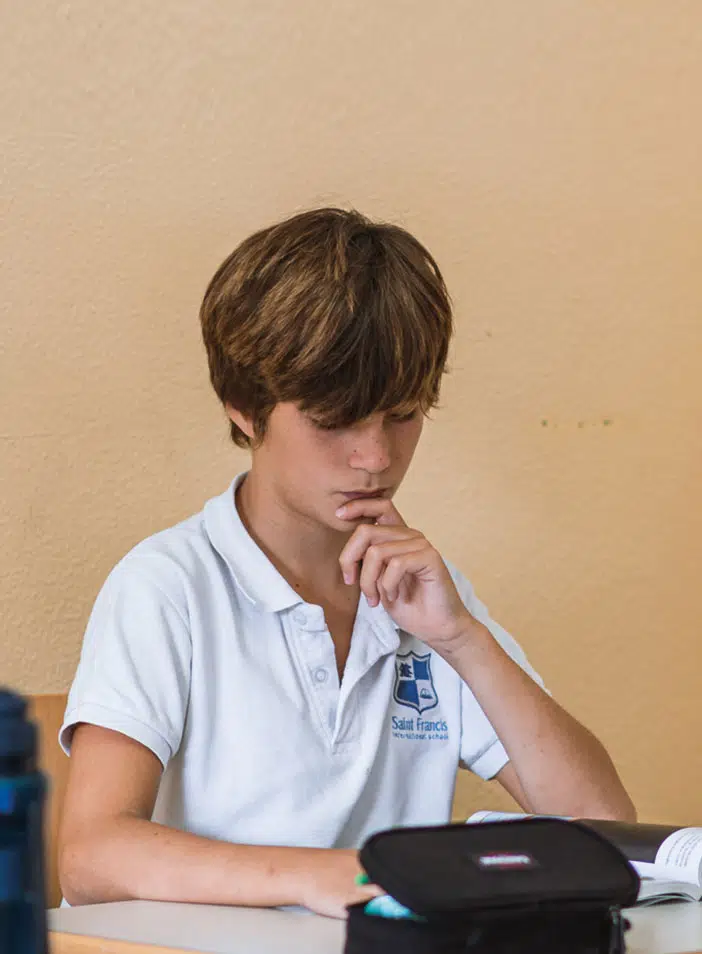
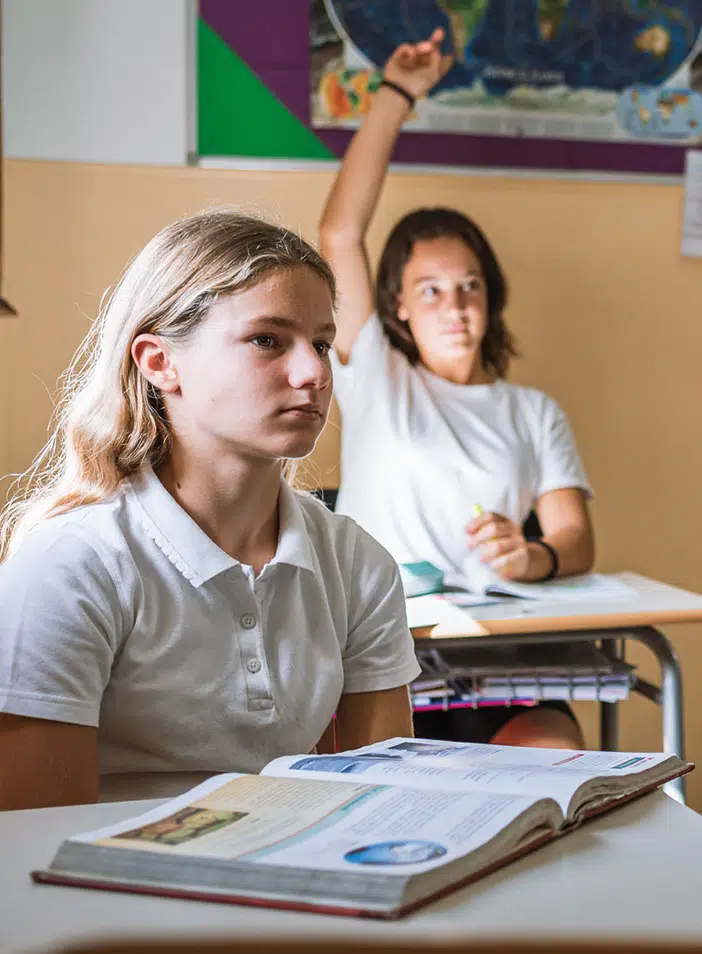
Students build on their elementary experience as they prepare for high school. Classes become more specialized, and emphasis is placed on organization, study skills, and research techniques. The curriculum prepares children for British and American high schools. In addition, students can prepare for the Italian state programme, leading to completion of Scuola Primaria exams in Grade 5 and Scuola Secondaria di I grado in Grade 8, which allows them to access the Italian Licei.
The educational program offered is “whole child” centered, so that, as well as high academic expectations, emphasis is also placed on the arts and knowledge of self and others.
Number sense and numeration
By the end of grade 5, students will:
Measurement
By the end of grade 5, students will:
Geometry and spatial sense
By the end of grade 5, students will:
Patterning and algebra
By the end of grade 5, students will:
Data management and probability
By the end of grade 5, students will:
The objective of the grade 5 science course is to promote independent study skills through the completion of daily responsibilities in the class and out. Students will learn to familiarize with the scientific method; learn to take class notes; learn to keep neat, complete, and accurate records of lessons; develop detailed scientific illustrations and observations as a means to experimental data collection. Written assignments will be central to the investigative part of the course. Testing will evaluate their assimilation of course concepts.
Topics:
Social Studies in the Middle School exposes students to a range of enquiry-based topics that seek to further their understanding of the relationship between people and their planet. We cast a critical eye on the history of the world to allow us to appreciate the modern workings of communities as they face the challenges of the future. The course fosters curiosity among the students to ask questions and develop independent methods of learning.
In Grade 6, pupils will begin to develop the skills that they need to improve their performance in English and enable them to achieve their full potential at this level and beyond.
Pupils will experience a wide variety of writing in English, both fiction ( such as narratives, descriptions, poetry, drama texts) and non-fiction (such as explanations, recounts, informative texts and reports). They will investigate and explore how texts are written and then be encour- aged to produce writing of their own, developing important language and writing skills. They will also continue to develop and expand their knowledge of grammatical structures, vocabu- lary and spelling in English.
In Grade 6 students will:
In addition, pupils will be given ample opportunity to speak in a variety of situations, both for- mal and informal, using language that is suitable for their audience and purpose.
English literature is rich and influential, reflecting the experiences of people from many different countries and ages. In Grades 6 to 8, pupils are encouraged to develop the skills to become enthusiastic and critical readers of stories, poems and drama, as well as non-fiction and media texts. They gain a sense of English literary heritage (spanning a millennium) and engage with many important texts from it. They also learn to appreciate and interpret the choices made by writers and speakers, and are thereby equipped to make creative and appropriate choices about how to communicate successfully themselves.
In Grade 6, pupils begin to develop important skills which will enable them to engage with and explore a variety of ideas and texts, understanding and responding to the main issues.
In Grade 6 students will:
The objective of the grade 6 math course is to consolidate basic computational skills learned in elementary school, focusing on the development of problem solving strategies. Learning to understand questions formulated in English and being able to plan strategies for solving exercises will be a fundamental skill required during the course. Throughout the year students will be introduced to algebraic concepts in preparation for the upcoming pre-algebra course.
Topics:
The objective of the grade 6 science course is to advance independent study skills through the completion of daily responsibilities in the class and out. Students will learn more detailed steps of the scientific method; neat, complete and well organized class notes will be a requirement; students will be encouraged to develop detailed scientific illustrations and observations as a means to experimental data collection. Written assignments will be central to the investigative part of the course. Testing will evaluate their assimilation of course concepts.
Topics:
The Middle School art history program gives students a deepening understanding of art and culture, it cultivates a broader mind and an ability to look at both art and the world in more than one way.
The Grade 6 Art History program will cover the following periods:
Social Studies in the Middle School exposes students to a range of enquiry-based topics that seek to further their understanding of the relationship between people and their planet. We cast a critical eye on the history of the world to allow us to appreciate the modern workings of communities as they face the challenges of the future. The course fosters curiosity among the students to ask questions and develop independent methods of learning.
In Grade 7, pupils will continue to develop important English skills of increasing complexity. They will increase their understanding of how language affects their world, and how they can use language to affect others.
Pupils will explore an increasing variety of different writing texts, both fiction and non-fiction, and explore the literary devices which make them particularly effective for readers and audi- ences. Pupils will continue to gain a deeper understanding of grammatical structures, improve their vocabulary and expand their knowledge of spelling strategies.
In Grade 7 students will:
In addition, pupils will be encouraged to speak in a variety of situations, gaining a deeper un- derstanding of the importance of levels of formality and appropriate word choices.
English literature is rich and influential, reflecting the experiences of people from many different countries and ages. In Grades 6 to 8, pupils are encouraged to develop the skills to become enthusiastic and critical readers of stories, poems and drama, as well as non-fiction and media texts. They gain a sense of English literary heritage (spanning a millennium) and engage with many important texts from it. They also learn to appreciate and interpret the choices made by writers and speakers, and are thereby equipped to make creative and appropriate choices about how to communicate successfully themselves.
In Grade 7 pupils consolidate and further develop important critical thinking skills and a deeper understanding of the features of a wide variety of text types. They will gain experience of different genres of fiction and a selection of non-fiction texts.
In Grade 7 students will:
The objective of the grade 7 math course is to introduce algebra concepts in preparation for the Algebra 1 course in grade 8. Students will be required to have a very solid foundation of basic computational skills. Knowledge of basic operations and fractions concepts are a requirement to the course, as are an understanding of the order of operations, simple numerical and variable expressions and equations. Graphing skills will be developed, although students should already be familiar with them and the precision requirements needed to work neatly with a pencil and straight edge. Accuracy and good organizational skills are needed to successfully complete the course.
Topics:
The objective of the grade 7 science course is to advance independent study skills through the completion of daily responsibilities in the class and out.
Students will learn to implement the steps of the scientific method through term laboratory re- ports and a yearly experimental science fair presentation; planning experiments and learning to collect data appropriately will be central to the investigative part of the course. Math skills will be integrated in the processing of experimental data. Neat, complete and well organized class notes will be a requirement.
Students will be encouraged to develop scientific curiosity and independent critical thinking as they analyze information and do research. Written assignments will be central to the investiga- tive part of the course; in particular, extensive research finalized to developing original discus- sion components will be required. Testing will evaluate their assimilation of course concepts.
Topics:
The Middle School art history program gives students a deepening understanding of art and culture, it cultivates a broader mind and an ability to look at both art and the world in more than one way.
The Grade 7 Art History program will cover the following periods:
Social Studies in the Middle School exposes students to a range of enquiry-based topics that seek to further their understanding of the relationship between people and their planet. We cast a critical eye on the history of the world to allow us to appreciate the modern workings of communities as they face the challenges of the future. The course fosters curiosity among the students to ask questions and develop independent methods of learning.
In Grade 8, pupils will continue to build on and consolidate their English skills in preparation for the demands of high school English. They will consolidate their understanding of the subtle techniques of language and how it affects others. They will continue to explore a wide variety of texts (both pre- and post-1914), literary devices, grammatical and narrative structures and vocabulary and write their own.
The Grade 8 English program is particularly geared towards 20th century and modern texts.
In Grade 8 students will:
English literature is rich and influential, reflecting the experiences of people from many different countries and ages. In Grades 6 to 8, pupils are encouraged to develop the skills to become enthusiastic and critical readers of stories, poems and drama, as well as non-fiction and media texts. They gain a sense of English literary heritage (spanning a millennium) and engage with many important texts from it. They also learn to appreciate and interpret the choices made by writers and speakers, and are thereby equipped to make creative and appropriate choices about how to communicate successfully themselves.
In Grade 8 pupils further develop and practice critical thinking and reading skills. They are able to infer and deduce meaning, recognise and discuss different interpretations of texts, justifying their views with evidence, in preparation for high school literature courses.
In Grade 8 students will:
The objective of the grade 8 Algebra 1 course is to consolidate concepts introduced in the grade 7 pre-algebra course and to prepare the students for the challenging requirements that many high schools expect in grade 9. Students will learn to think critically and analytically as they master the algebraic techniques needed in many standardized tests they will encounter in the future. They will learn to apply skills to real world situations and will gain a greater understanding of algebraic concepts needed for their future high school math work.
Topics:
The objective of the grade 8 science course is to consolidate independent study skills through the completion of daily responsibilities in the class and out. Students will continue to use the steps of the scientific method through term laboratory reports and a yearly experimental science fair presentation; planning experiments and learning to collect data appropriately will be central to the investigative part of the course. Math skills will be integrated in the processing of experimental data. Neat, complete and well organized class notes will be a requirement. Students will be encouraged to develop scientific curiosity and independent critical thinking as they analyze information and do attentive research. Focus on reliability of resources and paraphrasing will be fundamental to acceptable research material in order to develop original discussion material that has been carefully thought through. Testing will evaluate their assimilation of course concepts.
Topics:
CHEMISTRY
PHYSICS
ASTRONOMY
The Middle School art history program gives students a deepening understanding of art and culture, it cultivates a broader mind and an ability to look at both art and the world in more than one way.
The Grade 8 Art History program will cover the following periods:



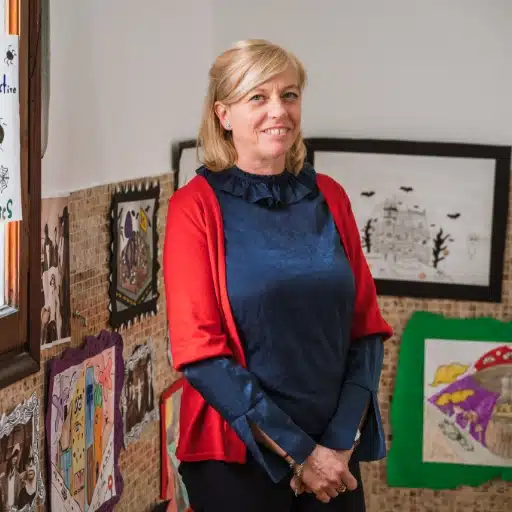
A selection of the most remarkable Art Projects produced by our Grade 5 to Grade 8 students during the 2021-2022 school year.
